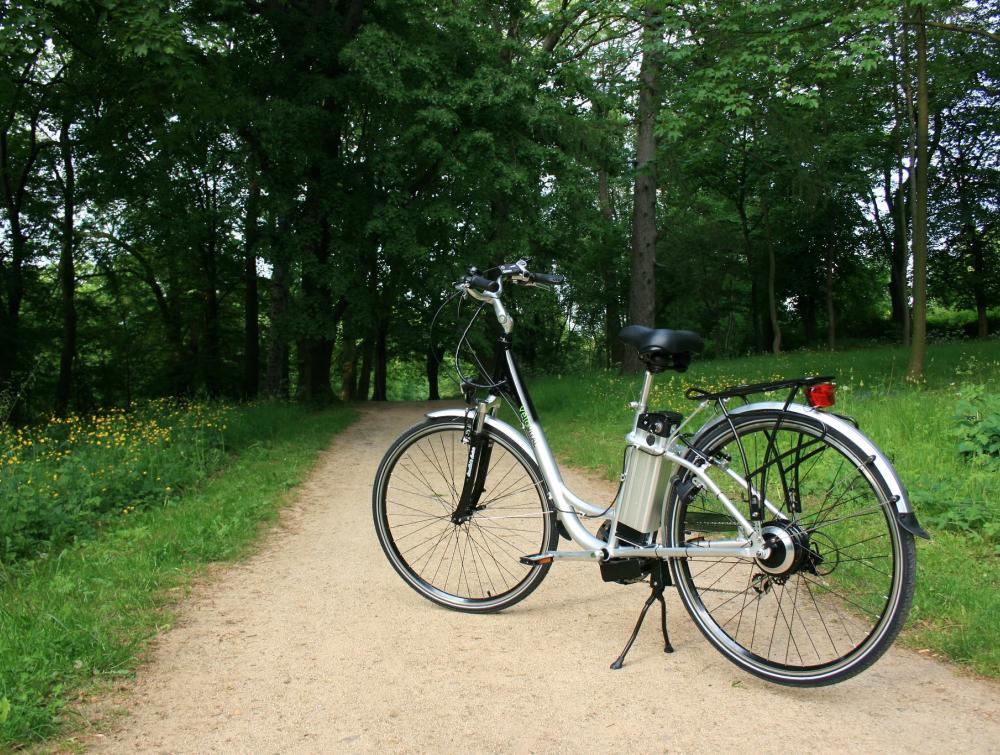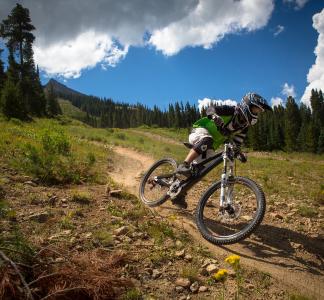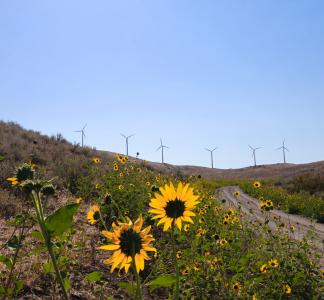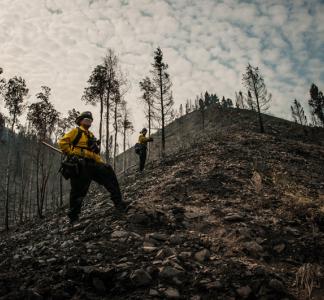Here are the facts on e-bikes and public lands

E-bike on trail
eBike Harz, Flickr
Electric bikes have a place, but not on non-motorized trails
The Trump administration is considering adopting a new policy that would open non-motorized trails on public lands to e-bikes. While we believe there’s a place for these increasingly popular vehicles, their use shouldn’t come at the expense of non-motorized recreation or our dwindling supply of wild and untamed lands.
Here, we answer a few simple questions about e-bikes and where they belong on our public lands.
What is an e-bike, and how is it different from any other bike?
Unlike traditional “human-powered” bicycles, e-bikes are propelled at least in part by an electric motor. The industry has created a series of classes to distinguish the power levels of the different models of e-bikes. Class I e-bikes (sometimes called “pedal assist”) use a motor to match ordinary pedaling, powering the bikes up to speeds of 20 mph. Class II or “throttle” e-bikes are more similar to traditional motorcycles and can be propelled with the use of a hand throttle (and without pedaling). Class III e-bikes are similar to the Class I pedal assist models but with motors that enable riders to travel much faster and farther, hitting speeds of nearly 30 mph.
So what’s the big deal? Is there a problem with e-bikes?
There’s no problem with e-bikes—but they don’t belong everywhere. Specifically, they don’t belong on trails that have been set aside for non-motorized uses.
The key point to remember is that an e-bike is a bicycle propelled by a motor. E-bikes make it possible to ride faster and farther, and they stand to fundamentally change the trail experience.
Imagine you’re a hiker who has slipped away from the hustle and bustle to a stretch of peaceful and secluded backcountry. Perhaps it’s a place where the air is a little clearer, or where you know you can count on hearing ordinarily crowd-shy songbirds. Now imagine an e-bike rider whizzing past, shattering the tranquility as they force you to dive for cover.
With motorized recreation becoming more and more popular, we have to make sure that the few areas of the U.S. reserved for non-motorized, human-powered and “quiet” recreation—like hiking, cross-country skiing and horseback-riding—are protected. By doing that, we’ll also be helping the already overburdened park rangers and other land agency staff who are in charge of policing the trails.
Why are we talking about this now?
Unfortunately, the Trump administration and federal land management agencies are considering policy changes that would allow e-bikes on non-motorized recreation trails that are currently open to ordinary bicycles.
We recently joined dozens of conservation and recreation groups on an official letter calling on federal land managers to protect some trails and areas from motorization and objecting to any attempt to allow e-bikes on non-motorized trails.
Our position is that there are millions and millions of miles of roads and motorized trails on public lands that are already open to e-bikes. Reserving some of the wildest remaining areas for human-powered recreation and wildlife habitat doesn’t seem like too much to ask.
But e-bikes aren’t the same as other off-road vehicles. Can’t we make an exception?
First of all, e-bikes are motorized vehicles, period. Motorized vehicles disrupt public lands in ways that modes of human-powered transportation, like ordinary cycling, simply do not. They travel faster, are harder on trails and have greater capacity to disturb wildlife habitat and negatively affect the trail experience for others.
Allowing e-bikes—or any other motorized vehicles--on non-motorized trails would set a dangerous new precedent, undermining nearly 50 years’ worth of travel management law and opening the door for broader motorized recreation in places that are intended solely for non-motorized use. It would be a huge change that would forever alter the experiences people have on the trail when they visit public lands.
It’s no secret that the Trump administration has set new and ignominious standards with its countless attacks on our shared lands and waters. Opening non-motorized trails to e-bikes would fit right into that track record.



